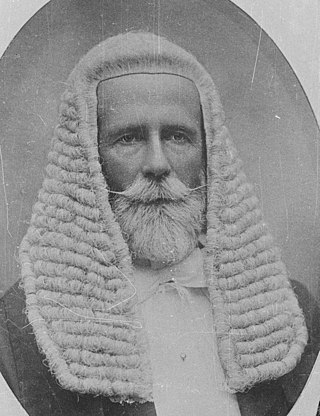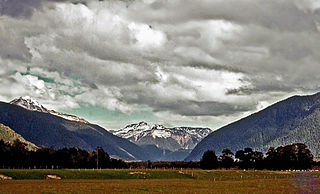Related Research Articles
Ashley was a New Zealand electorate situated north of Christchurch. It was in use from 1866 to 1902, and was replaced with the Hurunui electorate.

Sir Arthur Robert Guinness was a New Zealand politician, and Speaker of the House of Representatives.

Richard Harman Jeffares Reeves was a New Zealand politician of the Liberal Party. He was acting Speaker of the Legislative Council in 1905.

Waitaki is an electorate for the New Zealand House of Representatives that crosses the boundary of North Otago and South Canterbury towns on the East Coast of the South Island. The electorate was first established for the 1871 election that determined the 5th New Zealand Parliament. It has been abolished and re-established several times and in its early years was a two-member electorate for two parliamentary terms. The current electorate has existed since the 2008 election and is held by Miles Anderson of the National Party.

Eden, a former New Zealand parliamentary electorate, lay in the general area of the suburb of Mount Eden in the city of Auckland.
West Coast is a former New Zealand Parliamentary electorate, from 1972 to 1996.
Buller is a former New Zealand parliamentary electorate, from 1871 to 1972. It was represented by eleven Members of Parliament.

Grey, originally formed as Greymouth, is a former parliamentary electorate in the West Coast region of New Zealand. The electorate of Greymouth was created for the 1881 general election, and lasted until 1890. In 1890 the Grey electorate was created, and was abolished in 1919.
Newton was a 19th-century parliamentary electorate in Auckland, New Zealand. It existed from 1861 to 1893 and was represented by seven Members of Parliament.
Wakatipu was a parliamentary electorate in the Otago region of New Zealand, from 1871 to 1928.
Kumara was a parliamentary electorate in the West Coast region of New Zealand, from 1881 to 1890.
Hokitika is a former parliamentary electorate in the West Coast region of New Zealand, based on the town of Hokitika. It existed from 1871 to 1890 and was represented by nine members of parliament. For a time, it was one of the two-member electorates in New Zealand.
Inangahua is a former parliamentary electorate in the Buller District, which is part of the West Coast region of New Zealand, from 1881 to 1896. The town of Inangahua Junction, which gave the electorate its name, was located in the adjacent Buller electorate until 1887.
Dunedin East was a parliamentary electorate in the city of Dunedin in the Otago region of New Zealand from 1881 to 1890.
Roslyn was a parliamentary electorate in the city of Dunedin in the Otago region of New Zealand from 1866 to 1890.
Manawatu was a parliamentary electorate in the Manawatū-Whanganui region of New Zealand that existed during three periods between 1871 and 1996.
Collingwood was a parliamentary electorate in what is now the Tasman region of the South Island of New Zealand from 1861 to 1881.
William Henry Harrison was a 19th-century journalist from Greymouth who represented two Westland electorates in the New Zealand House of Representatives.

Thomas Shailer Weston, often referred to as Thomas S. Weston, was a judge and 19th-century Member of Parliament from Westland, New Zealand. Weston was the patriarch of one of two dominant Canterbury families of the legal profession.
The 1878 Grey Valley by-election was a by-election held on 22 May 1878 during the 6th New Zealand Parliament in the West Coast electorate of Grey Valley.
References
- McRobie, Alan (1989). Electoral Atlas of New Zealand. Wellington: GP Books. ISBN 0-477-01384-8.
- Scholefield, Guy (1925) [First published in 1913]. New Zealand Parliamentary Record (2nd ed.). Wellington: Govt. Printer.
- Wilson, James Oakley (1985) [First published in 1913]. New Zealand Parliamentary Record, 1840–1984 (4th ed.). Wellington: V.R. Ward, Govt. Printer. OCLC 154283103.